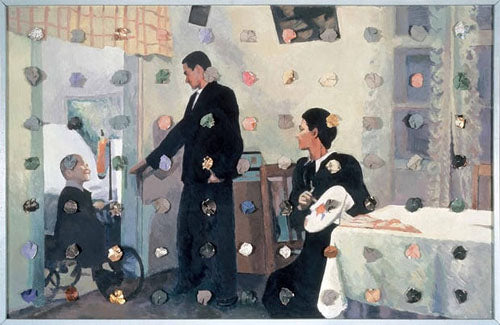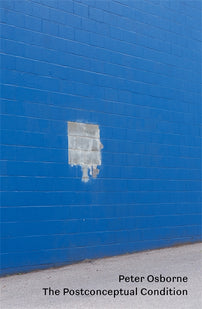The Postconceptual Condition
The Postconceptual Condition (40% off until January 29) offers a collection of essays, which expand on Osborne's Anywhere or Not At All: Philosophy of Contemporary Art. Here he introduces the aims, themes and judgements of the book.

If as Walter Benjamin maintained, ‘it is the function of artistic form … to make historical content into a philosophical truth’, then it is the function of criticism to recover and try to complete that truth. Never has this been more necessary or more difficult than with respect to contemporary art. The word of criticism, of course, is never final. Indeed, it is the passing, historical character of art and criticism alike – their ‘necessary abandonment’, as Roland Barthes once put it – as much as their immanent suspension of that passing character (in criticism, by writing) that places them into relation with such truth; relations that must thus be constantly renewed.
Today, it is the relations constituting the space of a global capitalist modernity, overdetermining other social relations with an insistent yet disjunctive and crisis-ridden contemporaneity, that must first be understood, as a condition of the renewal of a criticism that is to be at once both historical and emphatic (related to truth), and hence negative in relation to the world as it is. It is in the gap between the passing historical meaning and the truth of a work that the ‘untruth’ of the present appears.
Contemporary art is a point of condensation of a vast array of social and historical forces, economic and political forms, and technologies of image-production, which it treats as artistic materials and subjects to technical procedures in order to wrest these forces, forms and technologies from their everyday functions and re-present them anew. To comprehend such art, one must pass through the many different layers of mediation that are embedded in its materials and encompassed within its forms. Systematically, this would require a fluid process of transdisciplinary reflection and concept construction, which is methodologically complicated and empirically far-reaching, the product of necessarily collective rather than merely individual research. That is a process which, for all the intellectual materials available, scattered across the disciplines, has hardly begun. At the level of criticism, however, one can exploit particular instances and occasions, in order to render the contingent emblematic, a part of the whole, through the more concrete conceptualizations associated with the essay form. This is what I try to do here, in different ways, and at different levels of abstraction, in essays that are very much a part of the afterlife of this book’s precursor, Anywhere or Not At All: Philosophy of Contemporary Art.
These essays are located at that imaginary crossroads where the discourse of the university meets the speech of the artworld in the hope that the former might acquire greater actuality, while the latter may find a more lasting, critical and theoretical form. All but the first two, more theoretically wide-ranging, essays were initially written for talks at art institutions or as essays for art journals, in Belgium, Brazil, France, Germany, Russia, Spain and Sweden. They aspire to keep open a critical space within the transnationally proliferating discourses of contemporary art: a space that is summed up here by the terminologically difficult idea of a postconceptual condition, which is expounded in Chapter 1. Each essay sets out from a position broadly outlined in Anywhere or Not At All and develops it further by exploring its application to a particular occasion, institutional situation or body of artistic work; or by counter-posing it to competing theoretical positions.
The essays move from philosophical debates about the ‘Time of the Present’ – the attempt to give historical definition to ‘contemporaneity’ and its relations to other modes of temporalization, such as modernity and avant-garde – to interpretations of particular works of contemporary art (‘Art and Image’), via reflections on cultural-political and institutional forms: in particular, issues of autonomy and activism, in the art–politics relation, and the changing character of art-institutional spaces. There is thus a general – but non-systematic – movement within the book ‘from the abstract to the concrete’. The movement through Chapters 8 to 10, for example, charts a single argumentative development, at different levels. In each chapter throughout the book, it is what Hegel called ‘the whole’ that is the ultimate, determining object of the analyses, yet the whole necessarily appears in each instance only negatively, via different levels of abstraction and mediation.
The texts have been revised to remove a few purely occasional remarks, along with some recapitulations of theoretical content. However, thematic overlaps have been retained, and in some cases developed farther, to maintain that rhythm of allusion and variation characteristic of the essay form; indeed, of form as such. As for the judgements that are inevitably bound up with such analyses: as Lukács famously remarked, the ‘value-determining thing’ about judgement ‘is not the verdict … but the process of judging’. Which does not mean that the verdict is otiose.
[book-strip index="1" style="buy"]
